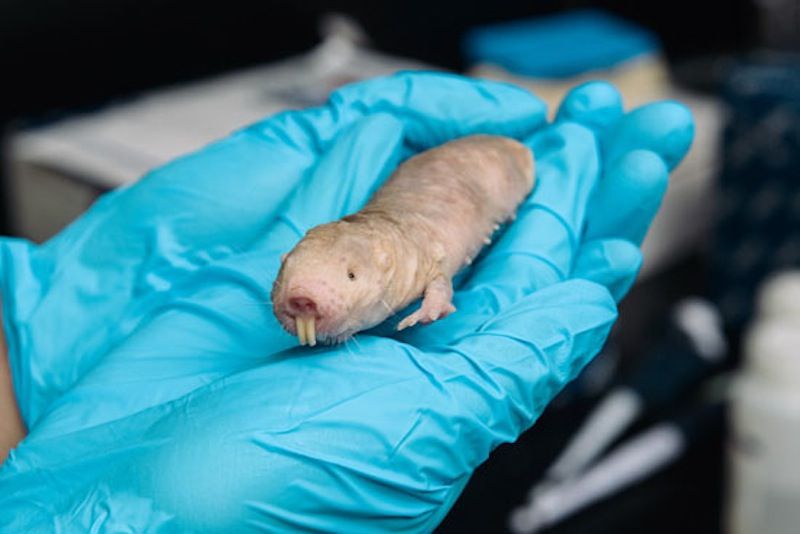Naked Mole Rat Named 'Vertebrate of the Year'

Famed as the world's longest-living rodent, the wrinkly faced naked mole rat has won Science Magazine's Vertebrate of the Year award, confirming that the contest is based on more than just looks.
The naked mole rat, a subterranean rodent native to East Africa, can live up to 30 years, roughly nine times longer than mice of the same size. With two yellow buck teeth protruding from a pale, hairless body, the mammal may not be an eye pleaser, but it has an alluring longevity-related adaptation that has gripped researchers in recent years: It seems to be immune to cancer. [Extreme Life on Earth: 8 Bizarre Creatures]
The academic journal Science Magazine chose the animal as its 2013 Vertebrate of the Year to celebrate two groundbreaking studies this year that have helped explain the animal's resistance to cancer.
Unraveling mole rat mysteries
The first study, published in June in the journal Nature by a team of researchers based at the University of Rochester in New York state, described a substance called hyaluronan that the rodents accumulate between their tissues in a molecularly heavier form than the hyaluronan found in humans and mice. The heavier form of the substance is, in part, thought to help make the rat's skin more elastic. This is particularly useful for animals that spend their days crawling through narrow underground tunnels. The researchers also discovered that when they removed the heavy substance from the rodents' tissues, the animals lost their resistance to tumors.
These findings suggested this particular form of hyaluronan plays an important role in cancer resistance, though its exact function in this role remains unclear.
The second study, published in October in the journal Proceedings of the National Academy of Sciences by some of the same members of the University of Rochester research group, showed that the mole rat is capable of building proteins — through a cellular process called protein transcription — with very few errors, compared to mice. The researchers believe that this transcription accuracy may help the animals live longer than mice and other rodents.
Sign up for the Live Science daily newsletter now
Get the world’s most fascinating discoveries delivered straight to your inbox.
The team next plans to introduce the naked mole rat's protein transcription mechanism into mice to see if it helps those animals live longer and develop cancer resistance, members of the team said in a video produced last week by the University of Rochester in honor of the award announcement.
The researchers hope that these follow-up studies will eventually help identify new cancer treatments for humans.
"This will be a proof of principle that those mechanisms that we discovered in the naked mole rat can be moved to different species, and can ultimately benefit humans," study co-author Vera Gorbunova said in the video.
'Inner beauty'
Though the hairless rodents may evoke grimaces from people not accustomed to working with them every day, the researchers involved in these studies have developed a keen appreciation for what they consider to be fairly beautiful creatures.
"Some people think these animals are ugly, but once you see them actually moving, you can see that they are very cute and there is inner beauty in these animals," Gorbunova said.
Science Magazine announced several other Notable Developments awards in its Dec. 20 issue, including Invertebrate of the Year, which went to planthoppers. These insects use gears in their legs to wind up and propel themselves forward during a hop, researchers discovered.
Follow Laura Poppick on Twitter. Follow us @livescience, Facebook & Google+. Original article on LiveScience.












